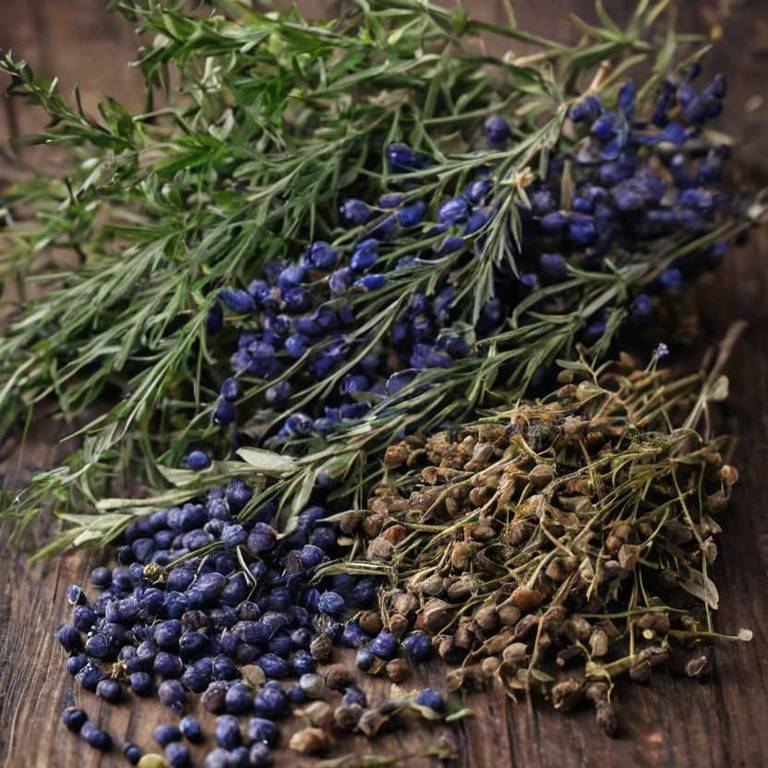By Leen Randell
Updated: Jul 20, 2024
10 Medicinal Constituents Of Prunus Spinosa (Sloe)

Prunus spinosa has active constituents such as anthocyanins, flavonoids, and phenolic acids.
These compounds possess anti-inflammatory, antioxidant, and antimicrobial properties, which can aid in treating various health conditions, including digestive issues, arthritis, and respiratory problems. The anthocyanins can help improve cardiovascular health and reduce the risk of certain cancers.
By utilizing these medicinal properties, people can benefit from improved overall well-being and a reduced risk of chronic diseases.
This article explains in details the 10 best active constituents of Prunus spinosa.
1. Amygdalin
Prunus spinosa amygdalin is a naturally occurring compound found in the fruit of the blackthorn tree.
It's a glycoside, comprising a sugar molecule bonded to a cyanogenic acid group. When ingested, amygdalin releases cyanide, which can be toxic in large quantities.
However, when consumed as part of traditional remedies or food products, like sloe gin or jam, the small amounts of amygdalin are generally considered safe and may offer potential health benefits, such as antioxidant properties.
2. Quercetin
Prunus spinosa quercetin is a flavonoid compound found in its fruit, which has been traditionally used in folk medicine for centuries.
Quercetin has potent anti-inflammatory and antioxidant properties, making it effective against various diseases including cardiovascular disorders, cancer, and neurological conditions.
It has also been shown to have antimicrobial and antiviral activities, providing protection against infections.
3. Ellagic acid
Prunus spinosa ellagic acid is a powerful polyphenolic antioxidant compound found in its fruit and leaves.
It has been extensively studied for its potential health benefits, including anti-inflammatory, antimicrobial, and antitumor activities.
Ellagic acid has also been shown to possess strong anti-cancer properties, inhibiting the growth of cancer cells and inducing apoptosis (programmed cell death).
4. Gallic acid
Prunus spinosa gallic acid is a type of polyphenolic compound found in the fruit and leaves of this plant.
It has been studied for its potential health benefits, including antioxidant and anti-inflammatory properties. Gallic acid has also been shown to have antimicrobial and antiviral effects, making it a promising agent against certain infections.
Additionally, it may help protect against cell damage caused by free radicals and oxidative stress.
5. Proanthocyanidins
Prunus spinosa proanthocyanidins is a type of bioactive compound found in the fruit of the blackthorn tree.
These powerful antioxidants are responsible for the fruit's deep purple color and have been traditionally used in herbal medicine to treat various health conditions such as diarrhea, fever, and inflammation.
Proanthocyanidins have also been shown to exhibit anti-inflammatory and antimicrobial properties, making them a popular ingredient in natural supplements and cosmetics.
6. Kaempferol
Prunus spinosa kaempferol is a flavonoid glycoside extracted from the fruits of the blackthorn tree.
This powerful antioxidant has been studied for its potential health benefits, including anti-inflammatory and antidiabetic properties. Kaempferol has also been shown to have antimicrobial activity and may help protect against oxidative stress.
Its presence in sloe berries may contribute to their traditional use in folk medicine for treating various ailments.
7. Salicin
Prunus spinosa salicin is a bioactive compound extracted from the fruit of the blackthorn plant.
It has been used in traditional medicine for its anti-inflammatory and pain-relieving properties, similar to aspirin. Salicin is converted into salicylic acid in the body, which is responsible for many of its therapeutic effects.
This natural alternative to synthetic salicylates has been used to treat conditions such as arthritis, gout, and fever.
8. Chalcones
Prunus spinosa chalcones is a group of flavonoids found in the fruit of this shrub.
These compounds have been studied for their potential health benefits and antioxidant properties.
Chalcones are a class of natural products that exhibit anti-inflammatory, antibacterial, and antifungal activities, making them a promising area of research for the development of new therapeutic agents.
9. Flavonoids
Prunus spinosa flavonoids is a group of bioactive compounds found in its fruits, leaves, and flowers.
These flavonoids possess potent antioxidant, anti-inflammatory, and antimicrobial properties, which have been linked to various health benefits.
They have been shown to exhibit anti-diabetic, cardio-protective, and anticancer activities, as well as improve cognitive function and protect against neurodegenerative diseases.
10. Phenolic acids
Prunus spinosa phenolic acids is a type of bioactive compound found in the fruit and leaves of the plant.
These compounds are responsible for its antioxidant, anti-inflammatory, and antimicrobial properties, which have been extensively studied for their potential health benefits.
Phenolic acids in Prunus spinosa have been shown to exhibit cytotoxic effects against cancer cells, as well as protect against oxidative stress and inflammation in various diseases.